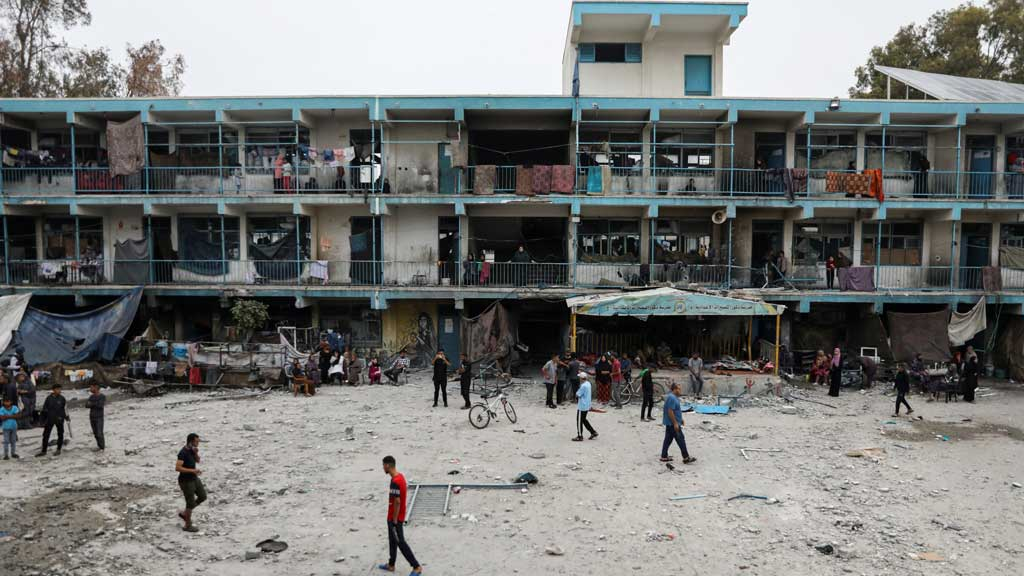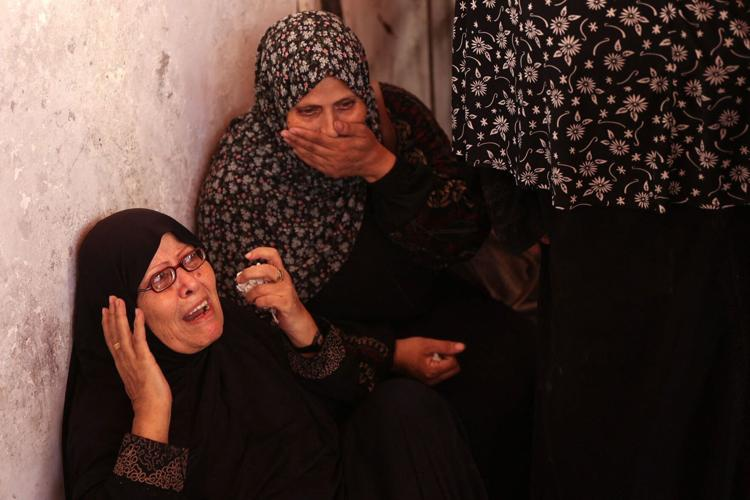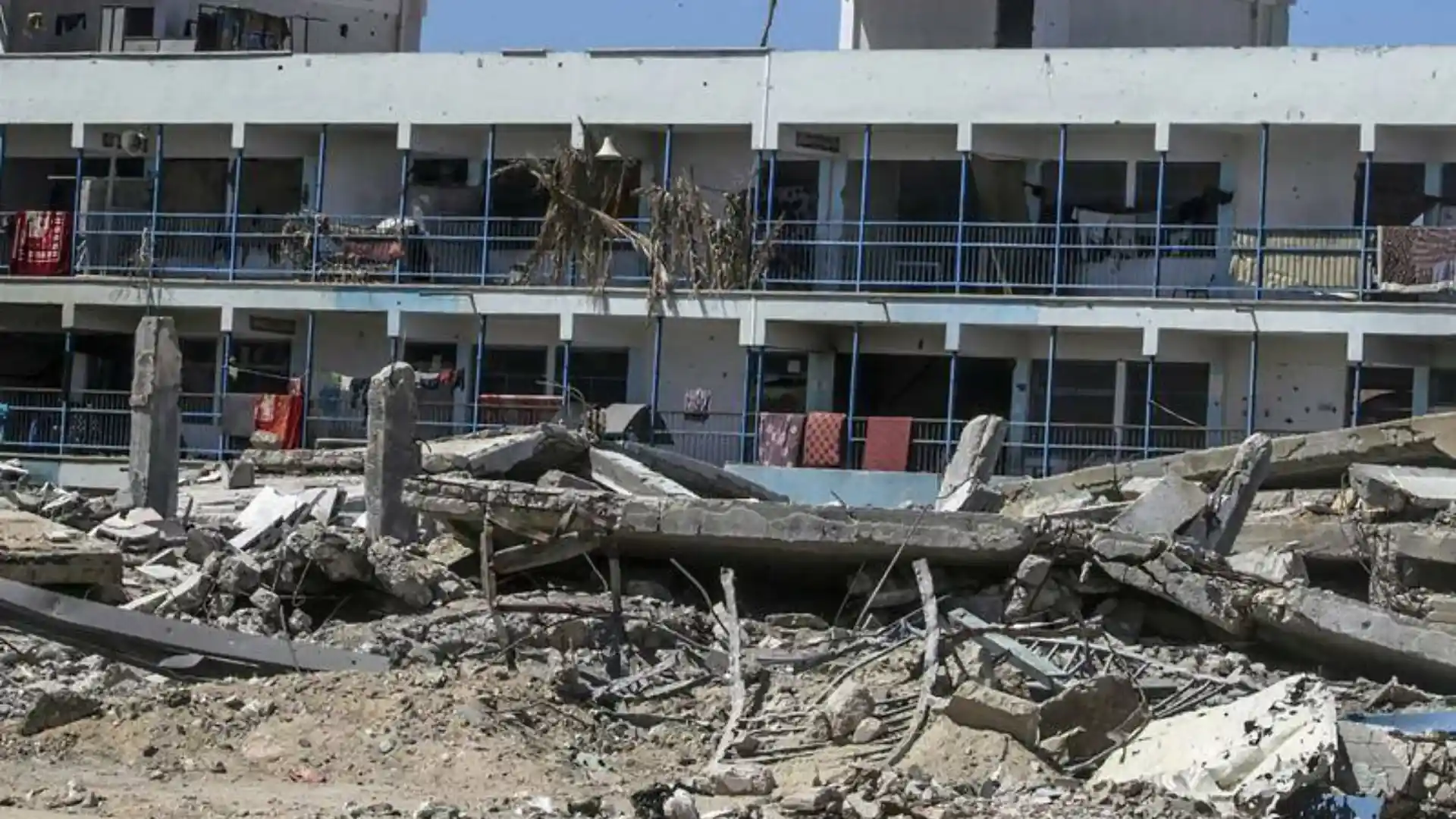Israeli strike has once again struck a devastating blow in Gaza, this time targeting a school compound where civilians had taken refuge. The strike, which claimed the lives of at least 22 people, primarily women and children, has been met with a wave of grief and outrage across the region.
The Israeli military, however, defended its actions, stating that the compound was being used as a Hamas command center, and that the operation was conducted with precautions to avoid civilian casualties. But for the families of those who perished, this is little comfort.
The missile hit the Al-Zaytoun School near Gaza City, where thousands of civilians, displaced by the ongoing conflict, were sheltering. Mahmoud Basal, a spokesperson for the Gaza Civil Defense, confirmed the death toll and described the destruction caused by the Israeli strike.
According to Basal, among the dead were 13 children, including a 3-month-old infant. Many of the survivors sustained severe injuries, with several children needing amputations due to the impact of the blast.
Read : Hezbollah Commander Killed in Israeli Strike
The Israeli military, in its defense, claimed that the compound was being used as a base by Hamas militants to orchestrate and carry out attacks. “Aircraft conducted a precise strike on terrorists who were operating inside a Hamas command and control center in Gaza City,” the Israel Defense Forces (IDF) said.
Read : IDF Targets Oct 7 Massacre Mastermind and Hamas Chief Mohammed Deif in Gaza: 71 Killed
The IDF further elaborated that the Hamas command center had been embedded inside the compound, which had previously served as the Al Falah School. This justification, however, does little to ease the anguish of those who lost loved ones in the Israeli strike.
The Impact on Civilians
For the thousands of civilians who had sought refuge in the school, the Israeli strike was an unexpected and tragic blow. Many had fled their homes in search of safety, only to find themselves in the crosshairs of the ongoing conflict.
A woman who had been staying at the school described the scene to CNN, saying, “There was no warning. We were sitting in the schools, and suddenly missiles started raining down on us.
There was no warning. Where is the conscience?” Her words reflect the frustration and despair felt by many civilians caught in the crossfire.

Children, too, are among the most vulnerable victims of this conflict. Amal, a young girl who was also sheltering at the school, questioned the senseless violence.
“What have we, the children, done to wake up and go to sleep in fear? At least stop the bombing of schools. We have no schools, no homes — where should we go?” Her plea is a stark reminder of the human cost of the Israeli strike and the ongoing conflict.
While the Israeli military maintains that the school was being used by Hamas militants, it is clear that civilians, including many children, have paid the highest price.
The question remains whether the loss of innocent lives can ever be justified in the name of military operations. The Palestinian officials have condemned the Israeli strike, accusing Israel of indiscriminately targeting civilian areas in its effort to weaken Hamas.
The Broader Context of the Conflict
This Israeli strike is just one episode in the broader conflict between Israel and Hamas, a conflict that has escalated dramatically since the October 7 attacks. Israel has vowed to dismantle Hamas, launching a series of airstrikes and ground operations aimed at neutralizing the militant group.
However, these military operations often come at the cost of civilian lives, as Hamas is accused of using schools, hospitals, and other civilian structures as shields for its operations.
The Israeli Defense Forces have frequently stated that they take measures to avoid civilian casualties, but the densely populated nature of Gaza makes it nearly impossible to conduct military operations without endangering innocent lives.
The international community has called for a ceasefire and urged both sides to prioritize the safety of civilians, but the violence shows no signs of abating.

CNN, reporting from the aftermath of the Israeli strike, showed footage of the devastation. Civil Defense workers scrambled to rescue survivors from the rubble, while mourning families gathered to identify the bodies of their loved ones.
At least 20 bodies were pulled from the debris, with many more still unaccounted for. The scale of destruction is overwhelming, and for those left behind, the grief is palpable.
As the conflict drags on, both Israel and Hamas continue to blame each other for the violence. The Israeli military argues that Hamas is using civilian infrastructure to hide its operations, while Palestinian officials accuse Israel of deliberately targeting civilian areas in its efforts to destroy Hamas.
In the midst of this blame game, civilians continue to suffer, with many left wondering when — or if — the violence will end.
The Role of International Aid and Humanitarian Efforts
In the wake of the Israeli strike, aid agencies and humanitarian organizations are scrambling to provide assistance to those affected by the conflict. The security of humanitarian convoys has been a pressing issue, with looting a frequent problem.
The Israeli Defense Forces recently reported that armed militants had been caught robbing a humanitarian aid truck in the Rafah area. In response, Israeli troops directed drones to eliminate the militants, further highlighting the complexity of delivering aid in a warzone.
Despite these challenges, aid organizations continue to press forward, delivering much-needed food, water, and medical supplies to civilians in Gaza.
The destruction caused by the Israeli strike on the school has only exacerbated the dire humanitarian situation in the region. Hospitals are overwhelmed with the injured, and there is a severe shortage of medical supplies, further compounding the crisis.
International leaders have called for both Israel and Hamas to ensure the safety of humanitarian workers and to allow aid to reach those in need.
However, the ongoing violence makes it difficult for these efforts to succeed. As the death toll rises, the need for a ceasefire becomes more urgent, but neither side appears willing to back down.
The Israeli strike on the Al-Zaytoun School is a tragic reminder of the human toll of the ongoing conflict in Gaza. While Israel maintains that the strike was aimed at Hamas militants, the loss of civilian lives, particularly women and children, is a stark and painful reality.
The international community continues to call for peace, but the violence persists, with both sides accusing the other of atrocities.
As the conflict drags on, it is the civilians who bear the brunt of the violence. Schools, hospitals, and homes have become battlegrounds, and the people of Gaza are left to pick up the pieces. The question remains: how many more lives will be lost before peace is achieved?
let’s enjoy few years on earth with peace and happiness….✍🏼🙏

